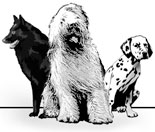Bing Blog #22
|
Our routine has changed, as well. Whereas we used to drive the dogs to parks for walks twice a day, we now walk around the pond on most mornings. It’s not a long walk but all the dogs enjoy it, and Bing always has his ballie to chase and swim with. This means that it’s one less time in the day that he gets into the car. Almost immediately, we found that when he DID get into the car, he was calmer, more biddable, more able to stay quiet and take treats. It’s almost like it’s a relief for him. This makes me think of noted Norwegian trainer, Turid Rugaas, when she talks about overexercising our dogs. We Americans seem to either underexercise our dogs or overexercise them. Either way, it’s not a good thing. Underexericse comes along with overweight issues and boredom, not to mention health problems. Overexercise can mean a dog who is not able to calm down; the dog can become hyperactive and hypervigilant. In this case, perhaps we were taking Bing in the car in exciting situations too often for it to be good for him. |
||||||||||||||||||||
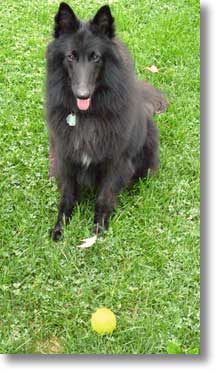 |
||||||||||||||||||||
Please throw the ballie!! |
||||||||||||||||||||
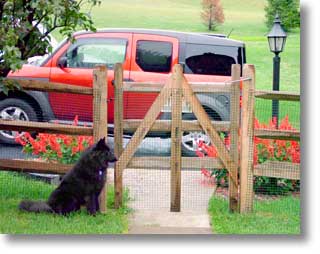 |
||||||||||||||||||||
|
In addition to not taking him in the car as often as we had previously, we also realized a few things about his habits. When just Bing and I travel in the car, he’s almost always quiet. If I add Acacia to the mix, he can still be quiet, but not always. Acacia has a profound effect on him. Her tolerance level seems to be immense, but I don’t quite understand it. His level of excitement has created something of a problem in her, in that she went through a phase at the end of a walk where SHE wouldn’t get IN the car. I considered many possible reasons for this, amongst them that her crate was too hot and small, the carpet on which she was laying was too dirty (she is rather fastidious!)….but as it turns out, she was sick and tired of hearing him BARK. Only occasionally will she make a low, throaty growl. When she does, he clams up in the most incredible way, head turned away and plastered against the far side of his crate. Pretty pathetic <evil grin> |
||||||||||||||||||||
And just so you don't forget where the car is... |
||||||||||||||||||||
|
Adding Pete to the mix in the car usually results in an increase in barking, too. However, Bing can be very quiet in Pete’s car. But add Montana to the car, and all hell breaks loose. Bing does NOT like Montana. He has snapped at her with cheap shots as I put her in the car many times. |
||||||||||||||||||||
|
So here are a few tactics I have discovered which work for us. First of all, we take Montana with us as infrequently as possible. She is so ancient that it’s a rare occasion that she’ll take a walk with us anyway. Second, I always put the other dog(s) in the car first, and then have Bing get into the car. If he’s already in there, he is in POUNCE mode, ready to scream at whoever has the audacity to get in! Third, I always have a large chewie treat for him…giant knuckle bones and such like have helped. Fourth, I spend some time practicing giving him a treat while reaching for the crate door or the lower hatch or the upper hatch. Good ole classical conditioning is what we’re doing to help him associate good things with the closing of doors, which seem to raise the greatest ire in him. I might do this three or four times each time we go somewhere, and the same for the ride home. It’s time consuming and uses up a lot of treats, but I am hoping to countercondition his current response. Fifth, Bing must sit before the hatches and crate doors open, whether going in or coming out. Taking that little bit of extra time to think will eventually help him to be a thinking dog, not a reacting dog. |
||||||||||||||||||||
 |
||||||||||||||||||||
A calm "sit" before the hatch opens. |
||||||||||||||||||||
|
We had been covering the front of his crate because he’d bark incessantly at me while I was in the driver seat, but that lasted only about 3 months before I took it down. We still have a divider between his and Acacia’s crate. In general he’s much quieter than he had been, and we are somewhat regaining our sanities. In due time, the classical conditioning will take its hold on the process and we’ll have a great traveler! |
||||||||||||||||||||
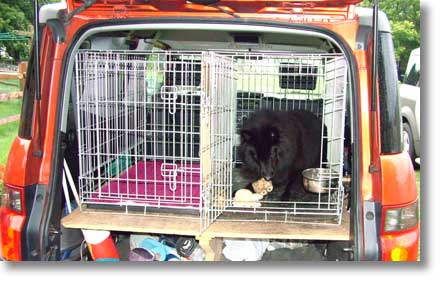 |
||||||||||||||||||||
Bing works on a chewie before the crate door closes. |
||||||||||||||||||||
|
I will add a bit about his other main source of contention, which is hands near his face. I happened upon a great idea a few weeks ago. I bet some other trainers have done this, but I don’t know of any who have, nor have I read about it anywhere yet. I have a homemade version of Sue Sternberg’s Asses-a-Hand. This is a rubber hand on a stick with a shirt sleeve attached to simulate a human arm. Sue uses it to assess resource guarding in shelter animals. Well my Sue (my other trainer) and I started to use the Assess-a-Hand to work on hand targeting with him, and it’s a great success! She started with hand targeting, carried on to doing ‘give your head’ with him (that is Sue’s personal favorite!), and progressed to moving the hand around his neck and back, stroking him gently and calmly. Bing tolerates it and even leans into it! Of course, we are clicking and treating the whole way. At this point, we feel that he has really made progress and is starting to accept her much more than he had even only a few months ago. This is really exciting news, especially as it has great implications for new ideas for my reactive dogs. So, as you can see, my bright and handsome Bing is doing wonderfully, learning new things every day, and overall is able to be calmer around people in general. We are getting ready for a Rally trial in two weeks, and for the trip next week. Bing still has much to learn, but he’s such a happy guy and a willing learner….there’s much more to come! |
||||||||||||||||||||
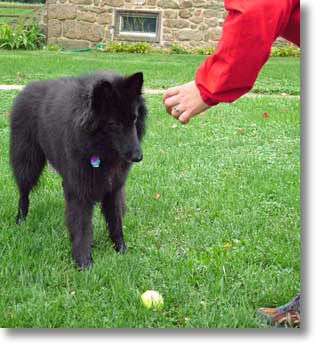 |
||||||||||||||||||||
Ali is reaching to pick up the ball, but Bing's focus is on her knee, just in case she kicks it. He doesn't get fooled easily. |
||||||||||||||||||||
| Comment to the Webmaster about this story. Your comments may be posted. Comment to Ali in private. Return to the Main Blog Page. |
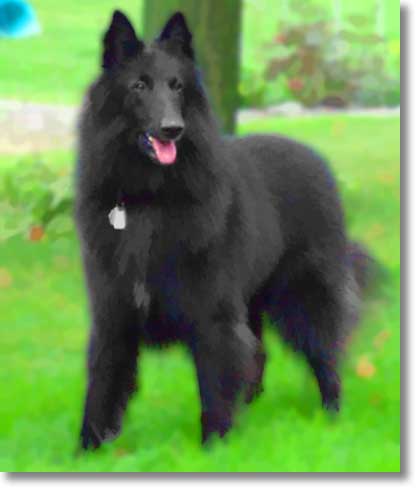 |
|||||||||||||||||||
